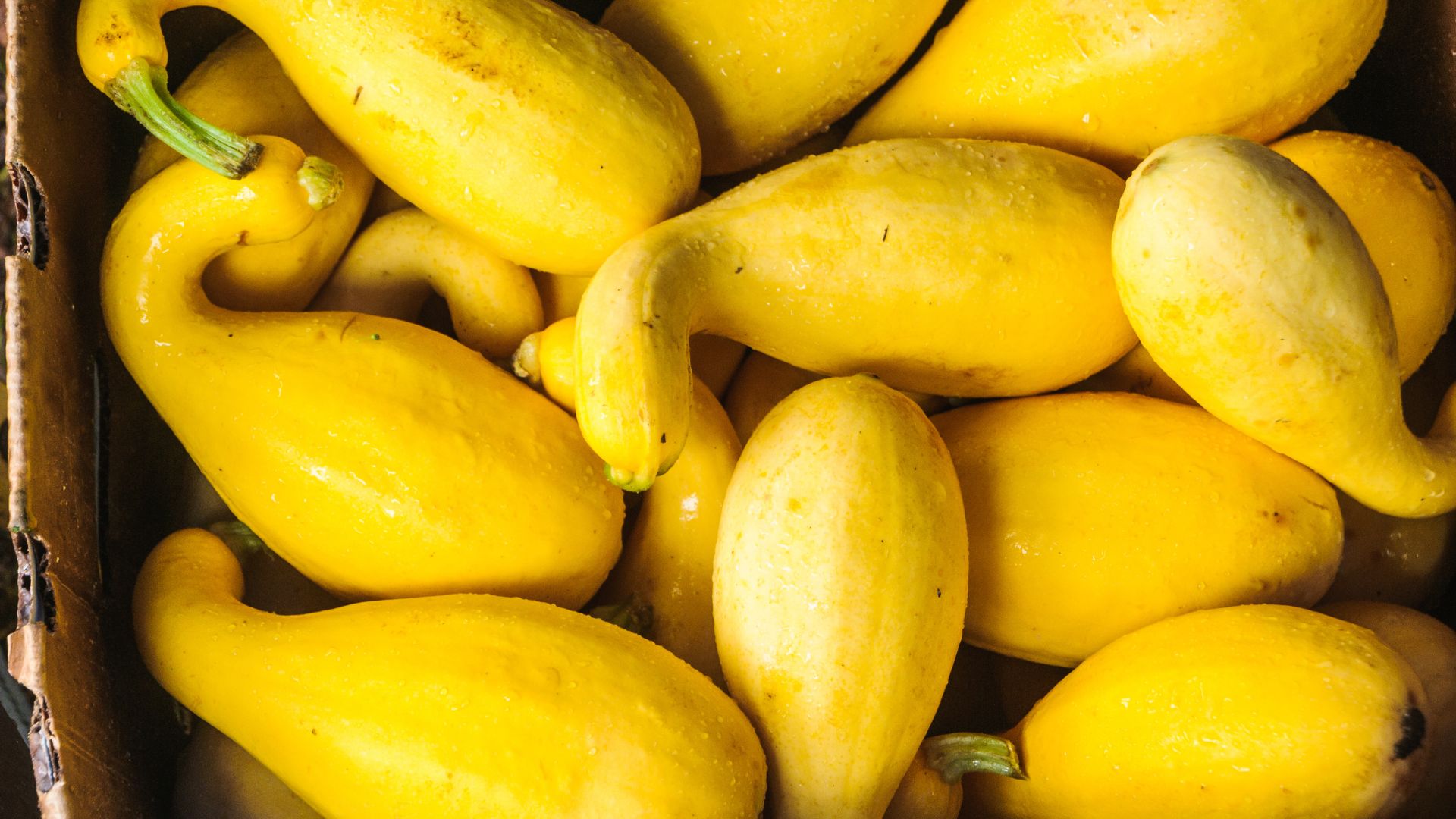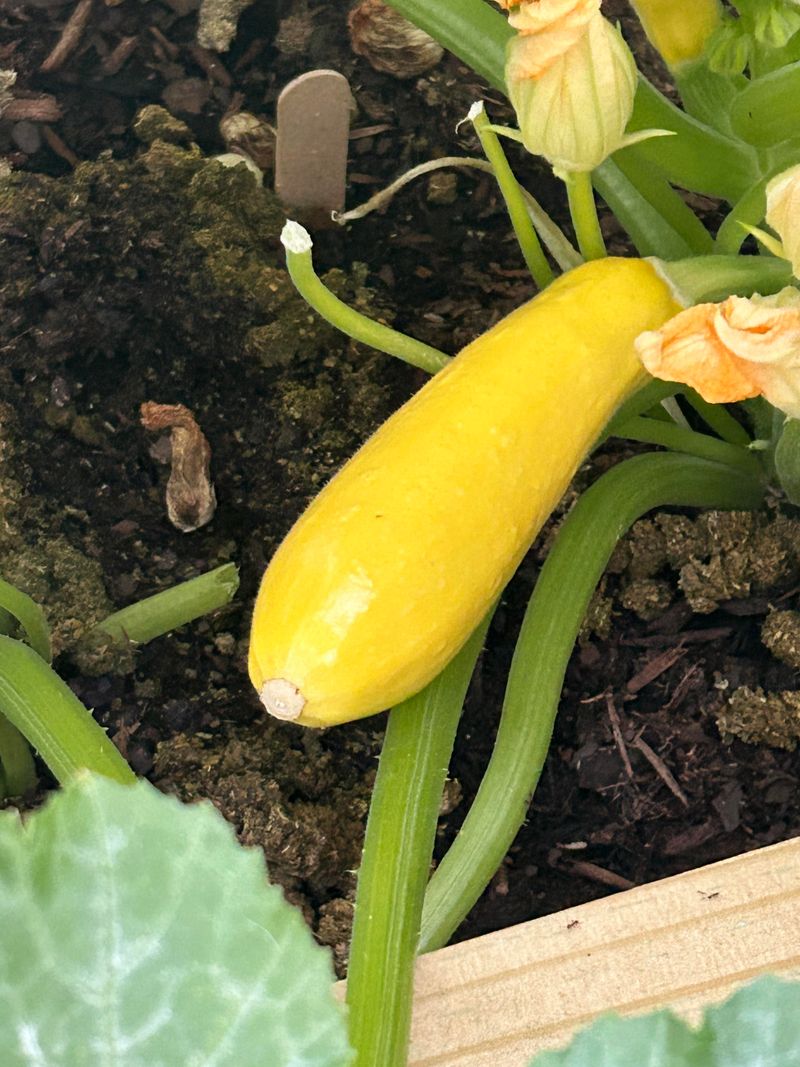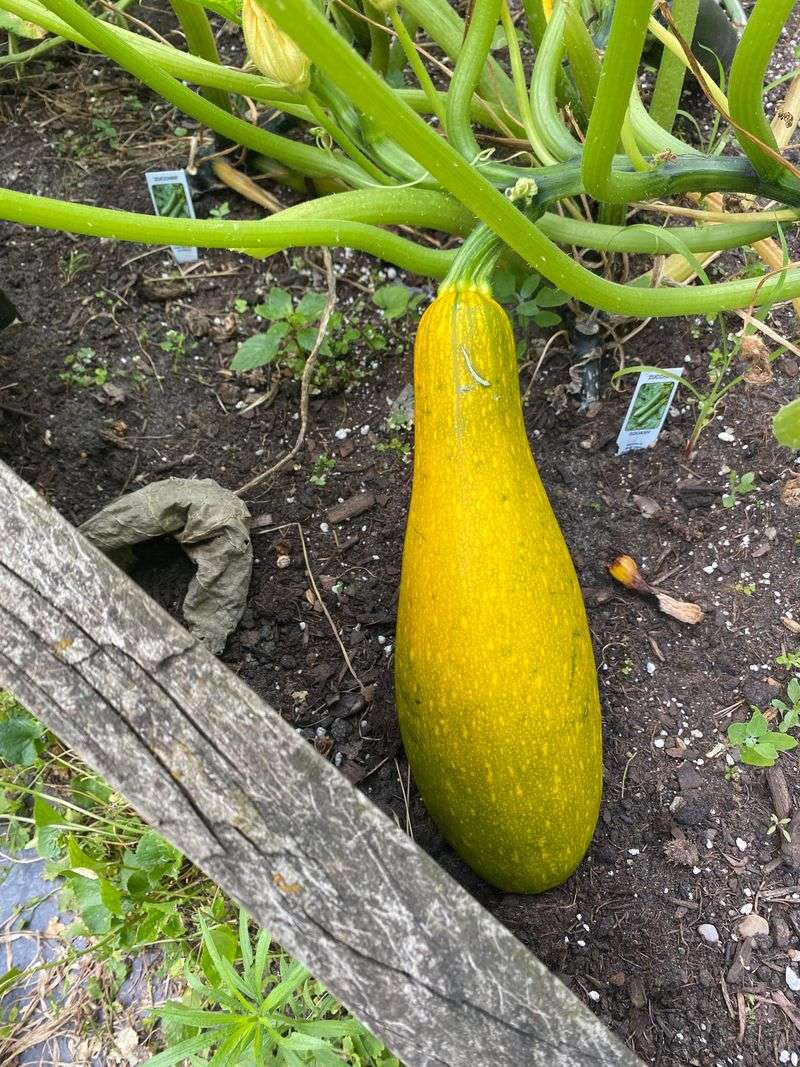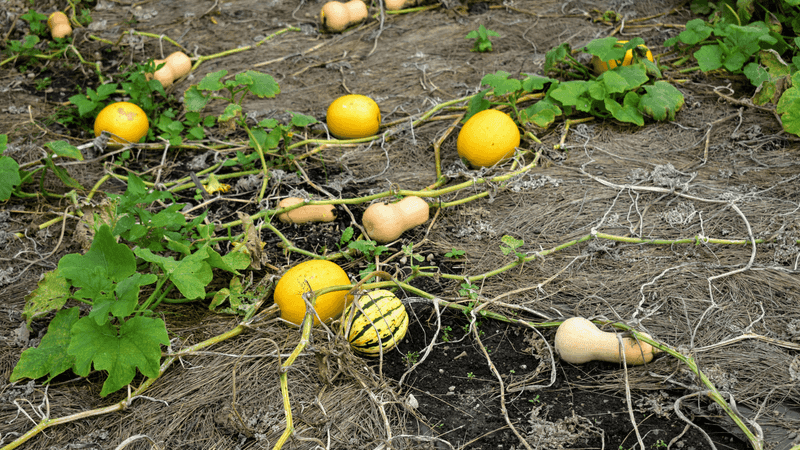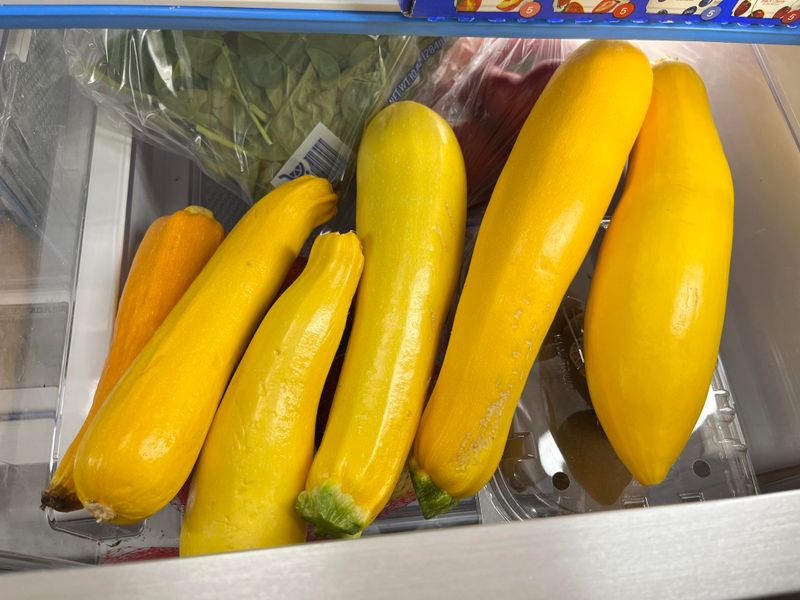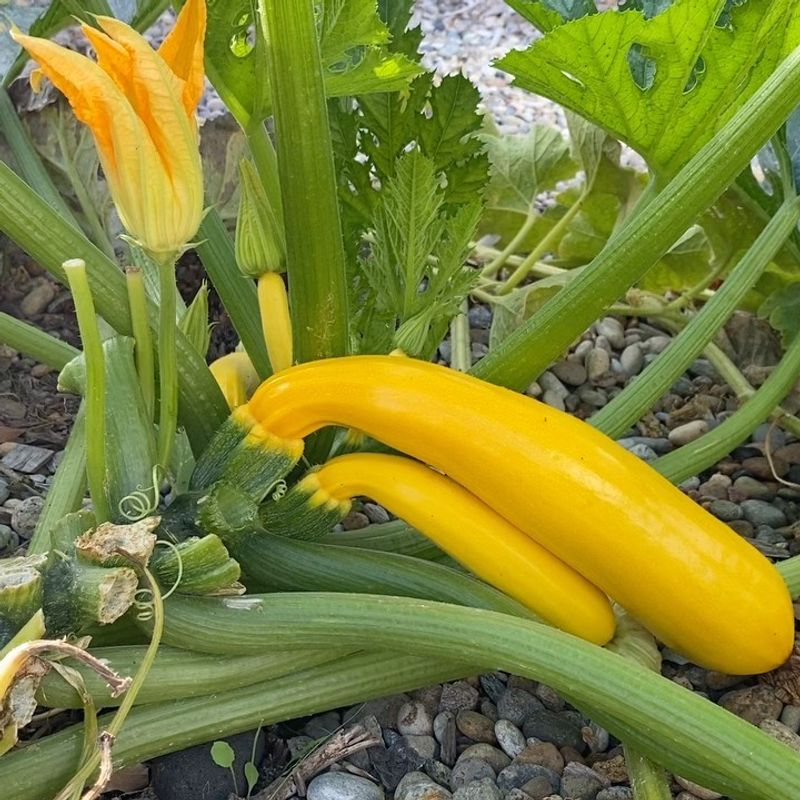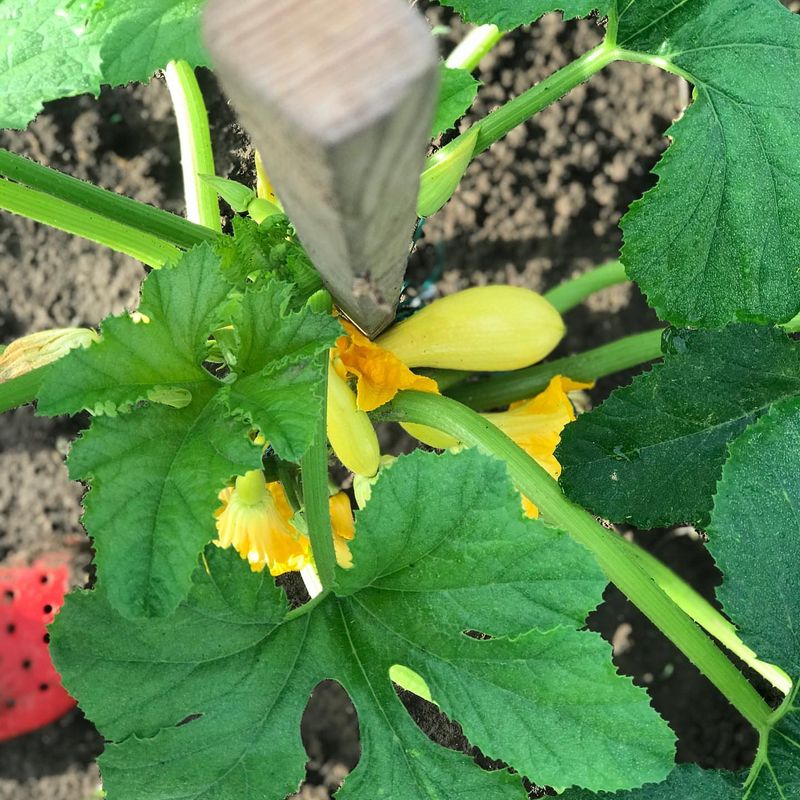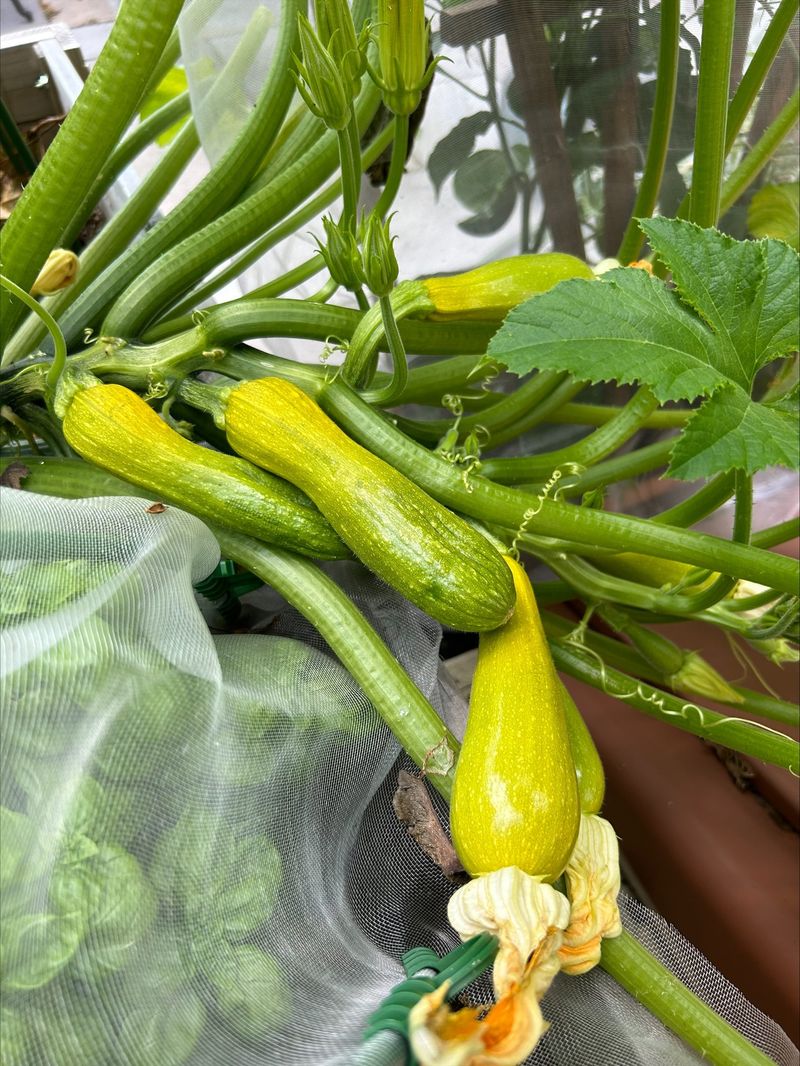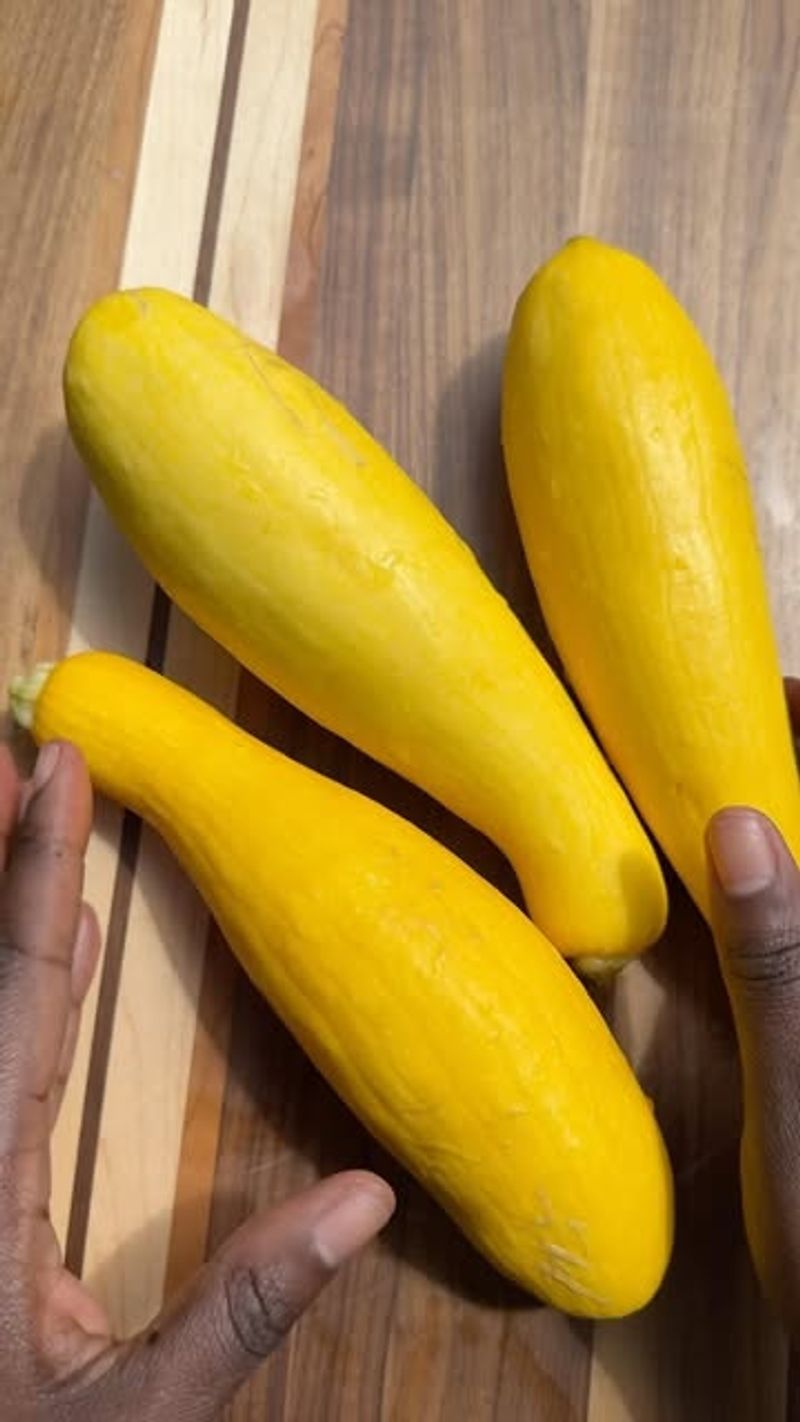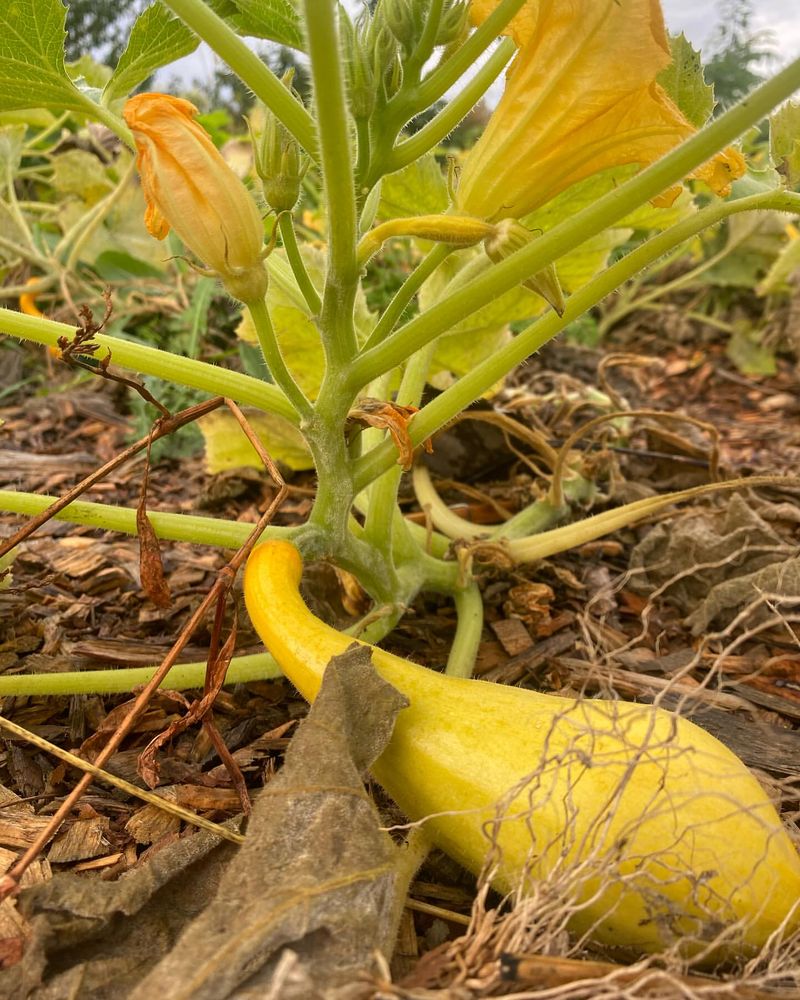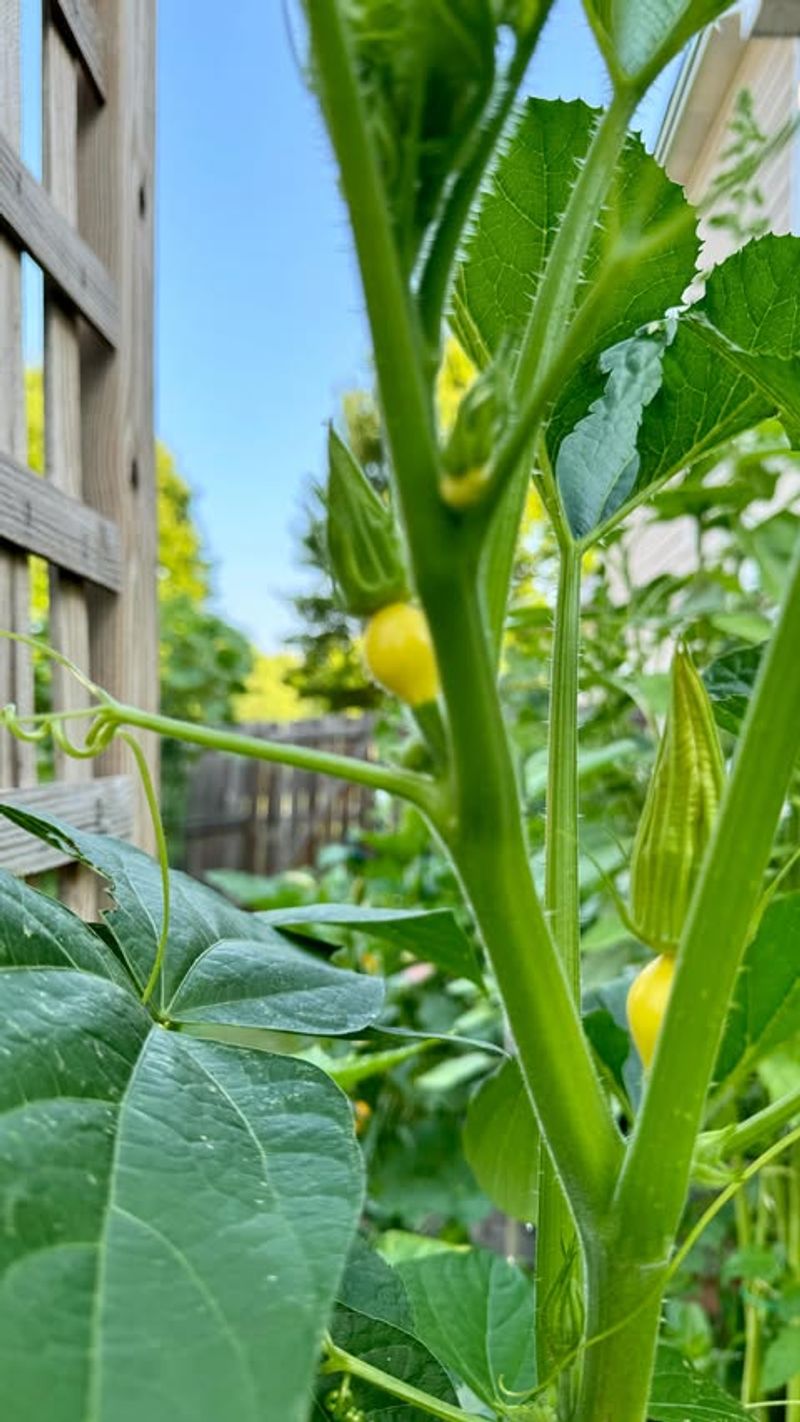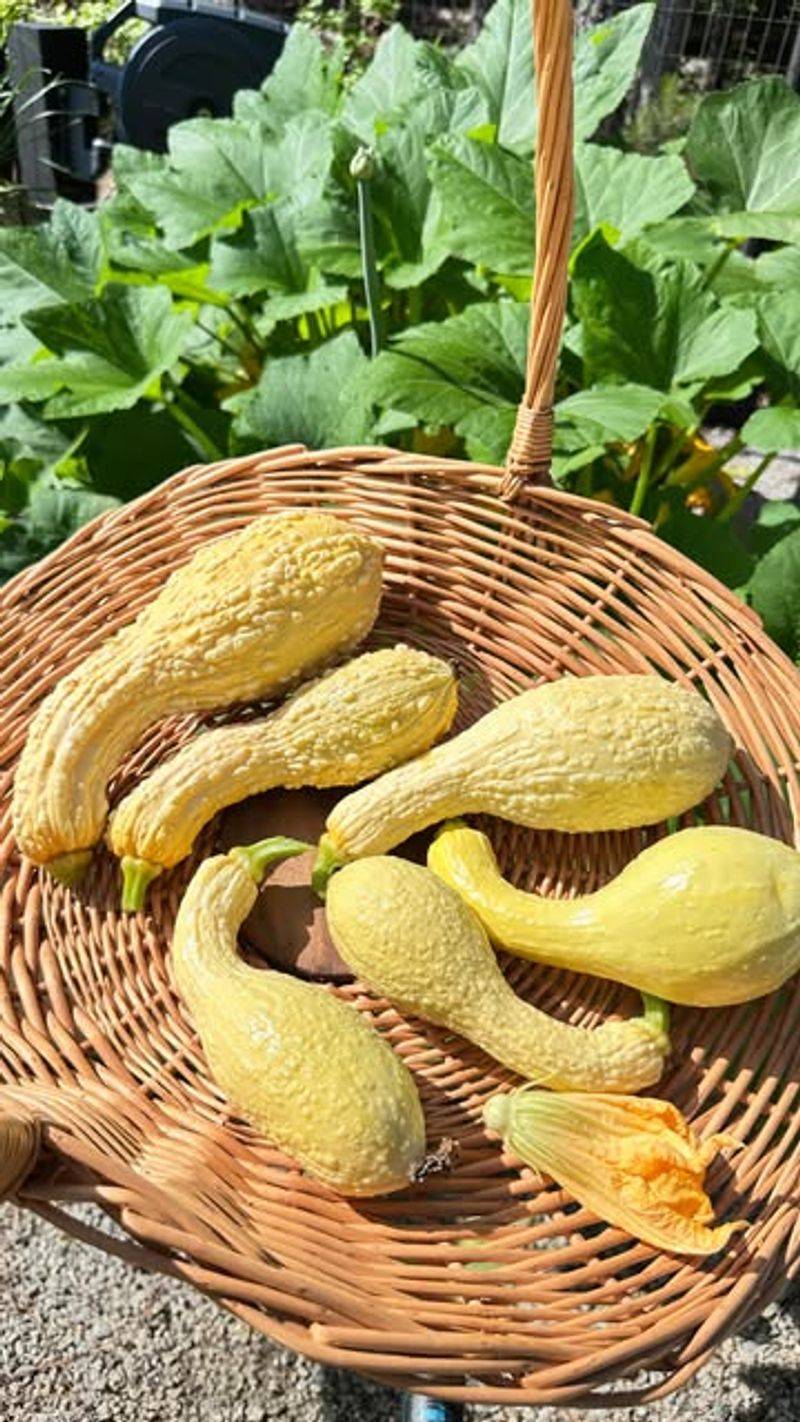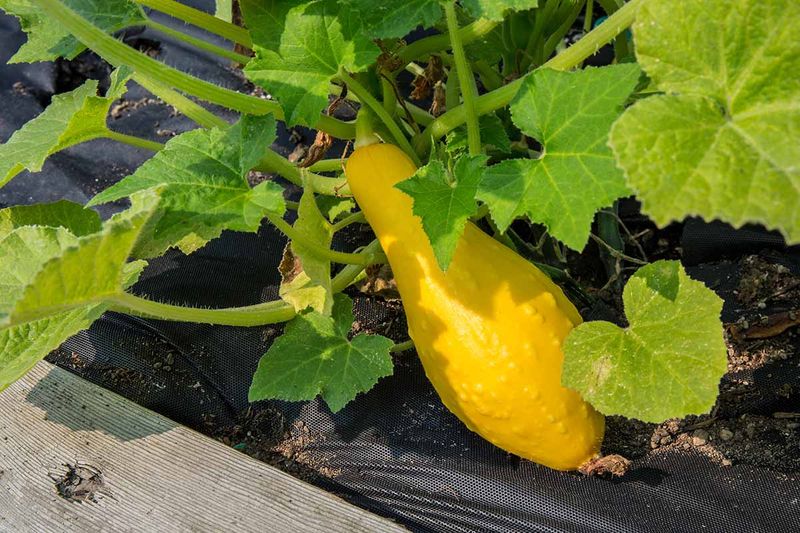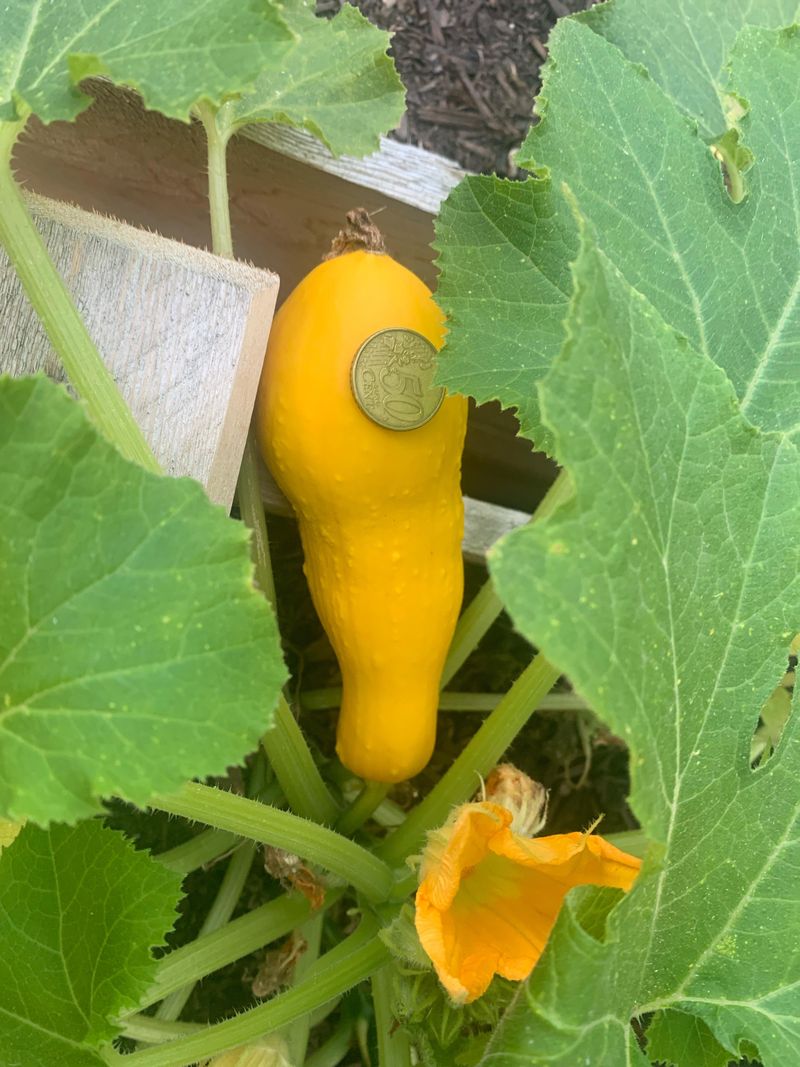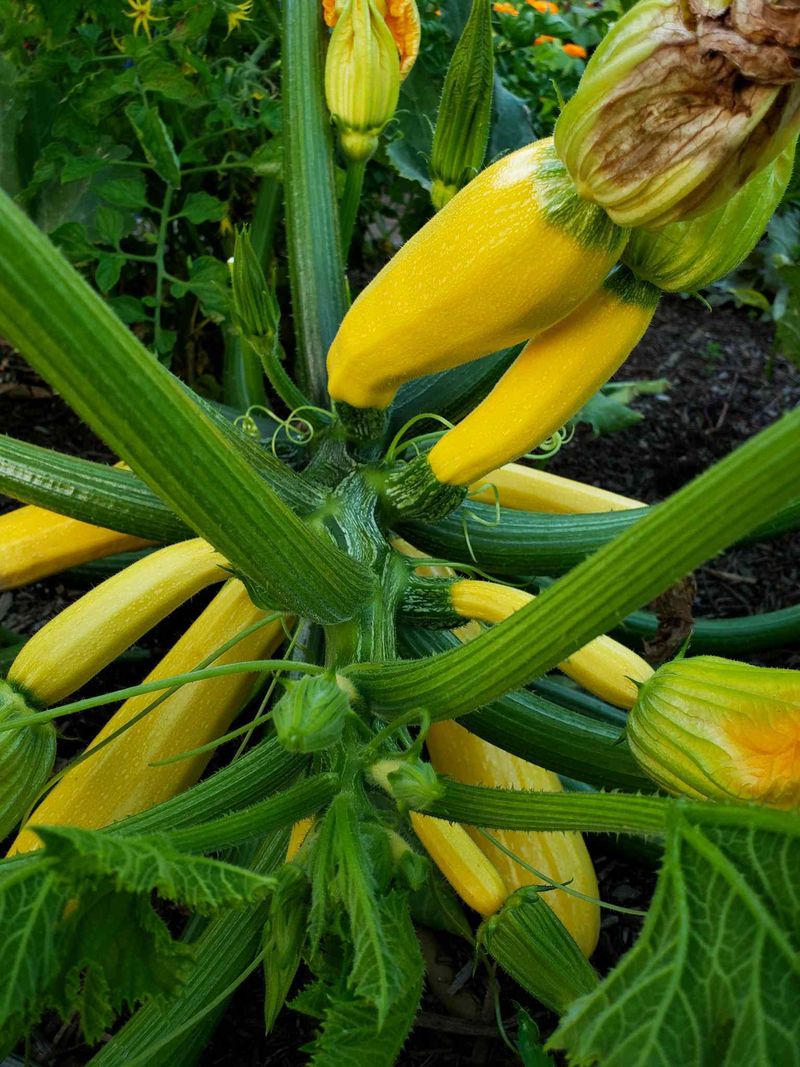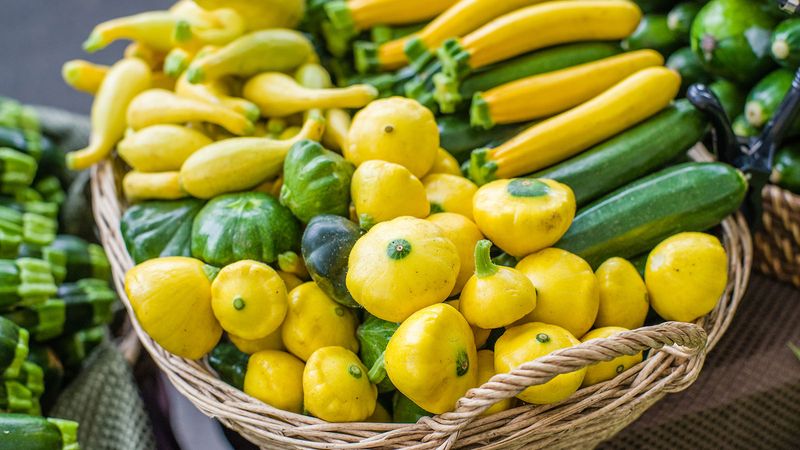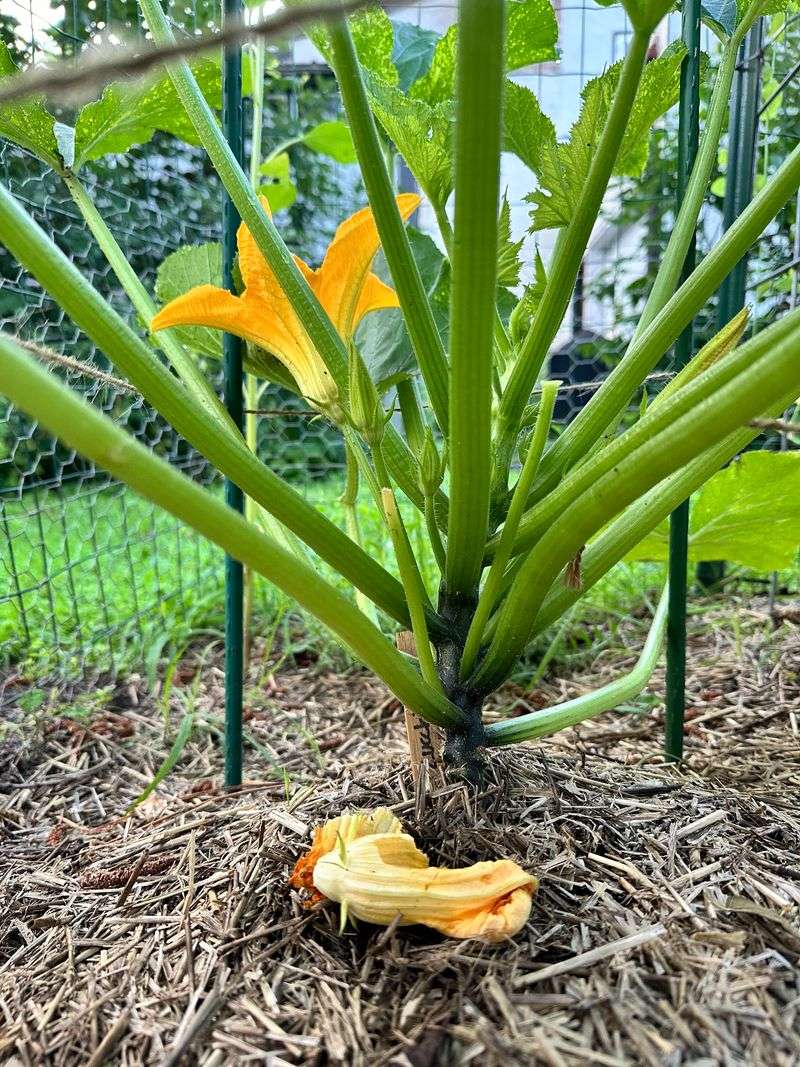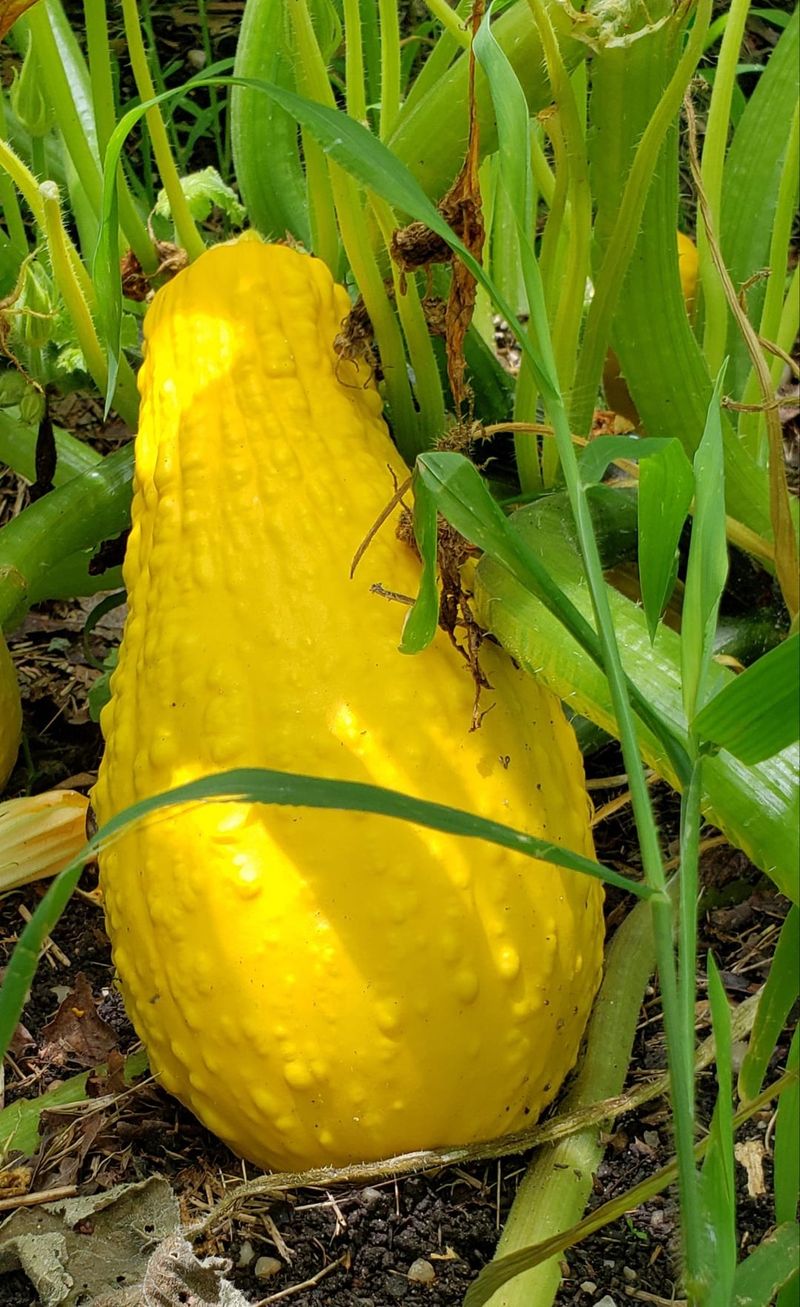Growing yellow squash is such a satisfying experience, but I’ve learned the hard way that harvesting them the wrong way can really hurt your plants and cut down on how much you get. It’s easy to get excited and pick too early or too late, and that can make a big difference.
Taking a sustainable approach to harvesting doesn’t just keep your squash plants happy—it helps them keep producing all season long. When you handle them gently and pick at the right time, the plants stay healthier and stronger.
Plus, using these careful methods means you get the best, most tender squash for your kitchen. Trust me, it’s worth the extra attention to make sure your harvest is as delicious as possible.
1. Harvest Early In The Morning
The cool morning hours offer ideal harvesting conditions when plants are naturally hydrated and less stressed. Squash tissues are firmer, making clean cuts easier without tearing.
Moisture levels in the morning help plants recover more quickly from the minor wound created during harvesting. The dew that’s present can actually help seal the cut surface naturally.
I’ve noticed my plants produce more consistently when I stick to morning harvests rather than evening ones. This timing seems to reduce shock and keeps the energy focused on producing new fruits.
2. Use Sharp Pruning Shears
Clean, sharp pruning shears create precise cuts that heal faster than tears or breaks. The plant expends less energy repairing a clean wound, redirecting resources to new fruit production instead.
Regular sanitizing of your tools prevents disease transmission between plants. A simple solution of one part bleach to nine parts water works perfectly for quick tool cleaning between cuts.
My gardening improved dramatically when I invested in quality pruning shears specifically for harvesting. Dull tools can crush stems and create jagged wounds that invite pests and diseases.
3. Leave A Small Portion Of Stem Attached
Keeping about an inch of stem attached to each squash prevents bacteria from entering the fruit through the cut end. This small stem acts as a natural seal, extending shelf life significantly.
Cutting too close to the fruit body can create an entry point for rot. The stem’s woody texture provides a barrier that protects the tender flesh from contamination and moisture loss.
During my years of growing, I’ve found stemless squash deteriorates nearly twice as fast as those with stems attached. This simple technique makes a remarkable difference in how long your harvest stays fresh.
4. Cut At A 45-Degree Angle
Angled cuts create a larger surface area that heals more efficiently than straight cuts. This technique reduces the chance of water pooling on the cut surface, which can lead to rot and fungal problems.
The diagonal cut minimizes contact between the wounded area and the soil or other plants. Many gardeners overlook this detail, but it significantly reduces disease transmission between plants.
After switching to angled cuts in my garden, I noticed fewer instances of stem rot and wilt. This small adjustment takes no extra time but delivers measurable benefits to plant health.
5. Harvest When Squash Are Young
Young squash, typically 6-8 inches long, put less strain on the plant than fully mature ones. Their smaller size means the plant hasn’t expended excessive energy and nutrients on a single fruit.
Tender, immature fruits taste significantly better with thinner skins and fewer seeds. The flavor is notably sweeter and the texture more delicate than older, larger squash.
Regular harvesting of young fruits signals the plant to produce more. Last summer, my most productive plants were those I harvested from frequently, keeping fruits on the smaller side rather than letting them grow oversized.
6. Support The Plant While Harvesting
Gently holding the main stem with one hand while harvesting prevents pulling or stressing the entire plant. This stabilization is especially important for younger plants with less established root systems.
Sudden movements or tugging can damage shallow roots and disrupt nutrient uptake. Supporting the vine also helps you make more precise cuts without accidentally snapping stems.
The first time I tried this method, I was surprised by how much movement typically happens during harvesting. Using the support technique has helped extend my plants’ productive lives by several weeks each season.
7. Use The Twist And Snap Method (Carefully)
For gardeners without tools handy, the twist-and-snap method can work when done properly. Gently twist the squash while supporting the vine, then snap with controlled pressure at the narrowest point of the stem.
This technique requires practice to perfect. The goal is breaking the stem cleanly without pulling on the main plant or creating jagged tears that invite disease.
During a rainstorm last year, I forgot my shears but needed to harvest quickly. By supporting the plant base and using careful twisting motions, I managed clean breaks that healed well without any negative impact on future yields.
8. Harvest After Dew Has Dried
While morning is ideal, waiting until dew has evaporated reduces disease spread. Wet conditions can help pathogens move between plants through water droplets on tools or hands.
Dry stems cut more cleanly than wet ones. The plant’s natural moisture is still high in morning hours, but external moisture has evaporated, creating optimal conditions for minimal stress harvesting. My community garden neighbors always wondered why I waited until around 9 AM to start harvesting.
After showing them the difference in cut quality and explaining the reduced disease risk, many adopted this simple timing adjustment.
9. Rotate Harvesting Areas
Moving systematically through your garden when harvesting reduces stress on any single area. Taking all squash from one plant before moving to the next can overwhelm individual plants.
Alternating harvest patterns gives plants recovery time between collections. This approach distributes the impact of harvesting activity more evenly across your garden.
After adopting this rotation method, I noticed more consistent production throughout the season. Previously, certain plants would produce heavily and then decline, but rotation has helped maintain steady yields from all plants for a longer period.
10. Handle Squash Plants By Their Base
Touching only the base of plants when moving among them preserves the delicate outer leaf surfaces. The fine hairs on squash leaves and stems can be damaged easily, creating entry points for disease.
Squash plants have natural protective barriers that can be compromised by excessive handling. Oils from our skin can sometimes interfere with these defenses when transferred to sensitive plant tissues.
One season I compared two identical garden sections—one where I handled plants minimally and at the base, another where I was less careful. The difference in plant health was noticeable by mid-season, with the minimally handled plants showing fewer signs of stress.
11. Use A Garden Basket Or Harvest Apron
Carrying a dedicated harvest container prevents repeatedly walking through plants to deposit squash elsewhere. Each trip through dense foliage risks damaging stems, leaves, and developing fruits.
Soft-sided baskets or harvest aprons with multiple pockets distribute weight evenly. Hard containers can bruise delicate squash skin during collection, reducing storage life and aesthetic appeal.
The year I started using a harvest apron with large pockets transformed my gardening efficiency. Not only did plant damage decrease, but the squash themselves showed fewer handling marks and lasted longer in storage.
12. Keep Leaves Intact During Harvest
Preserving as much foliage as possible maintains the plant’s photosynthesis capacity. Each leaf contributes to energy production that supports continued fruiting and overall plant health.
Accidental leaf removal during harvesting creates wounds that the plant must heal, diverting resources away from fruit production. Damaged leaves can also become entry points for common squash diseases and pests.
My neighbor and I grew the same squash variety last year, but his aggressive harvesting damaged many leaves. By season’s end, my plants with intact foliage had produced nearly 30% more squash—a powerful lesson in gentle harvesting techniques.
13. Harvest During Dry Weather
Postponing harvest during rainy conditions prevents spreading soil-borne diseases. Wet soil particles can splash onto plants and fruits, carrying pathogens that enter through harvest wounds.
Dry conditions allow cut surfaces to heal more quickly. The plant’s natural healing processes work most efficiently when environmental moisture is low, reducing infection risks. Learning this lesson cost me half a crop one particularly wet summer.
Now I always check the weather forecast and plan harvests for dry days when possible, which has virtually eliminated the spread of fungal issues in my garden.
14. Remove Damaged Or Diseased Squash Immediately
Promptly removing any damaged fruits prevents the plant from wasting resources. The energy that would go into a squash with pest damage or disease can be redirected to healthy fruits instead.
Diseased squash left on the vine can spread problems to neighboring fruits and plants. Even minor blemishes can quickly develop into serious issues that affect the entire garden.
During a particularly humid week last summer, I noticed some powdery mildew starting on a few fruits. By removing them immediately and adjusting watering patterns, I prevented what could have been a garden-wide outbreak.
15. Practice Consistent Harvesting Schedules
Establishing a regular harvesting routine—every 2-3 days during peak season—prevents fruits from growing too large. Consistent removal signals the plant to continue producing new flowers and fruits rather than focusing energy on existing ones.
Regular harvesting prevents the feast-or-famine cycle that stresses plants. Taking too many fruits at once creates a shock that can temporarily halt new fruit development. The summer I started checking my plants every other day instead of weekly completely transformed my harvest.
Not only did I get more squash overall, but they were consistently tender and perfect for cooking rather than occasionally overgrown.
16. Mulch Around Plants Before Harvesting
Applying organic mulch around plants creates a clean barrier between fruits and soil. This separation reduces splash-up during watering and prevents soil-borne pathogens from reaching vulnerable harvest cuts.
Mulch also stabilizes soil moisture and temperature, reducing overall plant stress. Less stressed plants recover more quickly from the minor trauma of harvesting. After adding straw mulch around my squash plants mid-season last year, I noticed immediate improvements.
The cleaner harvesting environment led to healthier stem cuts that healed faster, and the plants seemed more resilient overall.
17. Use The Two-Hand Method For Large Squash
Supporting oversized squash with both hands prevents tearing or stressing the vine when harvesting. One hand holds the fruit while the other makes the cut, distributing weight evenly. Large squash can act as levers that damage main stems if not properly supported during removal.
The extra weight creates significant torque that can split vines or uproot shallow sections. When I discovered some forgotten squash that had grown enormous, this technique saved my plants from damage.
Though I generally prefer harvesting younger fruits, this method ensures even overlooked giants can be safely removed without harming the plant’s productive capacity.

